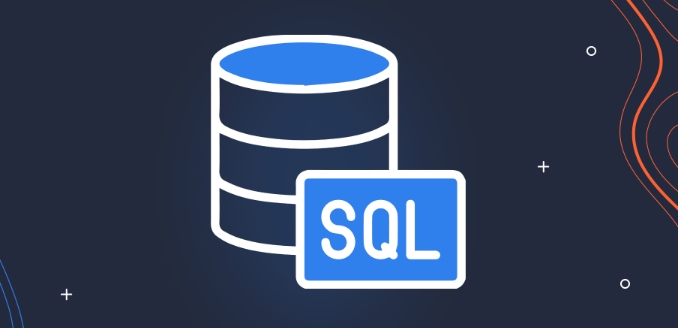The choice of SQL query optimization tool depends on the usage scenario. 1. Open source tools such as DBeaver and MySQL Workbench are suitable for small and medium-sized projects. The former supports multi-database and interface-friendly, while the latter is specially designed for MySQL and has built-in visual analysis functions, but the two lack automation suggestions. 2. Commercial tools such as SolarWinds DPA and Datadog are suitable for enterprise environments. The former provides real-time monitoring and automatic indexing suggestions, while the latter supports full-stack monitoring and can locate system-level problems, but are at a high price. 3. Integrated solutions such as JetBrains DataGrip plug-in and Azure Data Studio are suitable for use in the development stage. They can write and check and improve efficiency, but they are not as comprehensive as professional tools in in-depth analysis. Choosing the right tool according to your needs can effectively improve SQL optimization efficiency.

SQL query optimization tools can help you find performance bottlenecks faster and reduce debugging time. If you are worried about the slow response of the database and the high resource usage, it is particularly important to choose the right tool.

1. Open source tools: DBeaver and MySQL Workbench
These two tools perform well in lightweight scenarios and are suitable for small and medium-sized projects or individual developers.
- DBeaver supports a variety of database types, has a friendly interface, and comes with execution plan analysis function, so you can directly see the time-consuming nodes of the query.
- MySQL Workbench is designed specifically for MySQL, with built-in Query Profiler and Explain Plan visualization, suitable for daily maintenance and simple tuning.
Their advantages are free and easy to use, but their disadvantages are also obvious: there is a lack of automation advice, and you need to judge where to optimize it yourself.

2. Business tools: SolarWinds Database Performance Analyzer and Datadog
If you are working in an enterprise environment or facing complex systems, this type of tool is more suitable for you.
- SolarWinds DPA can monitor SQL execution in real time, and can also compare performance differences across databases, automatically give index suggestions and wait for event analysis.
- Datadog prefers full-stack monitoring. It not only looks at the execution time of SQL statements, but also analyzes them in combination with server resources to help locate whether it is a database or system level problem.
This type of tool is generally charged by node or instance, and the price is not low, but it saves a lot of manual inspection time and is especially suitable for operation and maintenance teams or DBAs.

3. Integrated solution: JetBrains DataGrip plug-in or Azure Data Studio
Sometimes you may prefer to make some optimizations during the development process, and plug-ins integrated into the IDE will be very useful.
- DataGrip itself does not provide deep optimization functions, but can implement basic syntax checking and execution path analysis with plug-ins (such as SQL Optimizer).
- Azure Data Studio is a modern tool launched by Microsoft that supports expansion. Some plug-ins developed by the community can already provide similar functions such as index suggestions and query comparison.
The advantage of this combination is that it does not need to switch environments and write and check it while writing. It is suitable for developers' daily use, but it is not as comprehensive as professional tools in terms of in-depth analysis.
In general, which tool to choose depends on your usage scenario: open source is enough for small projects, business products are considered in enterprise-level requirements, and integrated tools can be used to assist in optimization during the development stage. Basically all that is it. After choosing the right tool, SQL optimization can be much easier.
The above is the detailed content of SQL Query Optimization Tools Comparison. For more information, please follow other related articles on the PHP Chinese website!

Hot AI Tools

Undress AI Tool
Undress images for free

Undresser.AI Undress
AI-powered app for creating realistic nude photos

AI Clothes Remover
Online AI tool for removing clothes from photos.

Clothoff.io
AI clothes remover

Video Face Swap
Swap faces in any video effortlessly with our completely free AI face swap tool!

Hot Article

Hot Tools

Notepad++7.3.1
Easy-to-use and free code editor

SublimeText3 Chinese version
Chinese version, very easy to use

Zend Studio 13.0.1
Powerful PHP integrated development environment

Dreamweaver CS6
Visual web development tools

SublimeText3 Mac version
God-level code editing software (SublimeText3)

Hot Topics
 Defining Database Schemas with SQL CREATE TABLE Statements
Jul 05, 2025 am 01:55 AM
Defining Database Schemas with SQL CREATE TABLE Statements
Jul 05, 2025 am 01:55 AM
In database design, use the CREATETABLE statement to define table structures and constraints to ensure data integrity. 1. Each table needs to specify the field, data type and primary key, such as user_idINTPRIMARYKEY; 2. Add NOTNULL, UNIQUE, DEFAULT and other constraints to improve data consistency, such as emailVARCHAR(255)NOTNULLUNIQUE; 3. Use FOREIGNKEY to establish the relationship between tables, such as orders table references the primary key of the users table through user_id.
 Key Differences Between SQL Functions and Stored Procedures.
Jul 05, 2025 am 01:38 AM
Key Differences Between SQL Functions and Stored Procedures.
Jul 05, 2025 am 01:38 AM
SQLfunctionsandstoredproceduresdifferinpurpose,returnbehavior,callingcontext,andsecurity.1.Functionsreturnasinglevalueortableandareusedforcomputationswithinqueries,whileproceduresperformcomplexoperationsanddatamodifications.2.Functionsmustreturnavalu
 Can You Provide Code Examples Demonstrating Pattern Matching in SQL?
Jul 04, 2025 am 02:51 AM
Can You Provide Code Examples Demonstrating Pattern Matching in SQL?
Jul 04, 2025 am 02:51 AM
Pattern matching functions in SQL include LIKE operator and REGEXP regular expression matching. 1. The LIKE operator uses wildcards '%' and '_' to perform pattern matching at basic and specific locations. 2.REGEXP is used for more complex string matching, such as the extraction of email formats and log error messages. Pattern matching is very useful in data analysis and processing, but attention should be paid to query performance issues.
 Using SQL LAG and LEAD functions for time-series analysis.
Jul 05, 2025 am 01:34 AM
Using SQL LAG and LEAD functions for time-series analysis.
Jul 05, 2025 am 01:34 AM
LAG and LEAD in SQL are window functions used to compare the current row with the previous row data. 1. LAG (column, offset, default) is used to obtain the data of the offset line before the current line. The default value is 1. If there is no previous line, the default is returned; 2. LEAD (column, offset, default) is used to obtain the subsequent line. They are often used in time series analysis, such as calculating sales changes, user behavior intervals, etc. For example, obtain the sales of the previous day through LAG (sales, 1, 0) and calculate the difference and growth rate; obtain the next visit time through LEAD (visit_date) and calculate the number of days between them in combination with DATEDIFF;
 How to find columns with a specific name in a SQL database?
Jul 07, 2025 am 02:08 AM
How to find columns with a specific name in a SQL database?
Jul 07, 2025 am 02:08 AM
To find columns with specific names in SQL databases, it can be achieved through system information schema or the database comes with its own metadata table. 1. Use INFORMATION_SCHEMA.COLUMNS query is suitable for most SQL databases, such as MySQL, PostgreSQL and SQLServer, and matches through SELECTTABLE_NAME, COLUMN_NAME and combined with WHERECOLUMN_NAMELIKE or =; 2. Specific databases can query system tables or views, such as SQLServer uses sys.columns to combine sys.tables for JOIN query, PostgreSQL can be used through inf
 How to create a user and grant permissions in SQL
Jul 05, 2025 am 01:51 AM
How to create a user and grant permissions in SQL
Jul 05, 2025 am 01:51 AM
Create a user using the CREATEUSER command, for example, MySQL: CREATEUSER'new_user'@'host'IDENTIFIEDBY'password'; PostgreSQL: CREATEUSERnew_userWITHPASSWORD'password'; 2. Grant permission to use the GRANT command, such as GRANTSELECTONdatabase_name.TO'new_user'@'host'; 3. Revoke permission to use the REVOKE command, such as REVOKEDELETEONdatabase_name.FROM'new_user
 How to backup and restore a SQL database
Jul 06, 2025 am 01:04 AM
How to backup and restore a SQL database
Jul 06, 2025 am 01:04 AM
Backing up and restoring SQL databases is a key operation to prevent data loss and system failure. 1. Use SSMS to visually back up the database, select complete and differential backup types and set a secure path; 2. Use T-SQL commands to achieve flexible backups, supporting automation and remote execution; 3. Recovering the database can be completed through SSMS or RESTOREDATABASE commands, and use WITHREPLACE and SINGLE_USER modes if necessary; 4. Pay attention to permission configuration, path access, avoid overwriting the production environment and verifying backup integrity. Mastering these methods can effectively ensure data security and business continuity.
 What is the SQL LIKE Operator and How Do I Use It Effectively?
Jul 05, 2025 am 01:18 AM
What is the SQL LIKE Operator and How Do I Use It Effectively?
Jul 05, 2025 am 01:18 AM
TheSQLLIKEoperatorisusedforpatternmatchinginSQLqueries,allowingsearchesforspecifiedpatternsincolumns.Ituseswildcardslike'%'forzeroormorecharactersand'_'forasinglecharacter.Here'showtouseiteffectively:1)UseLIKEwithwildcardstofindpatterns,e.g.,'J%'forn






